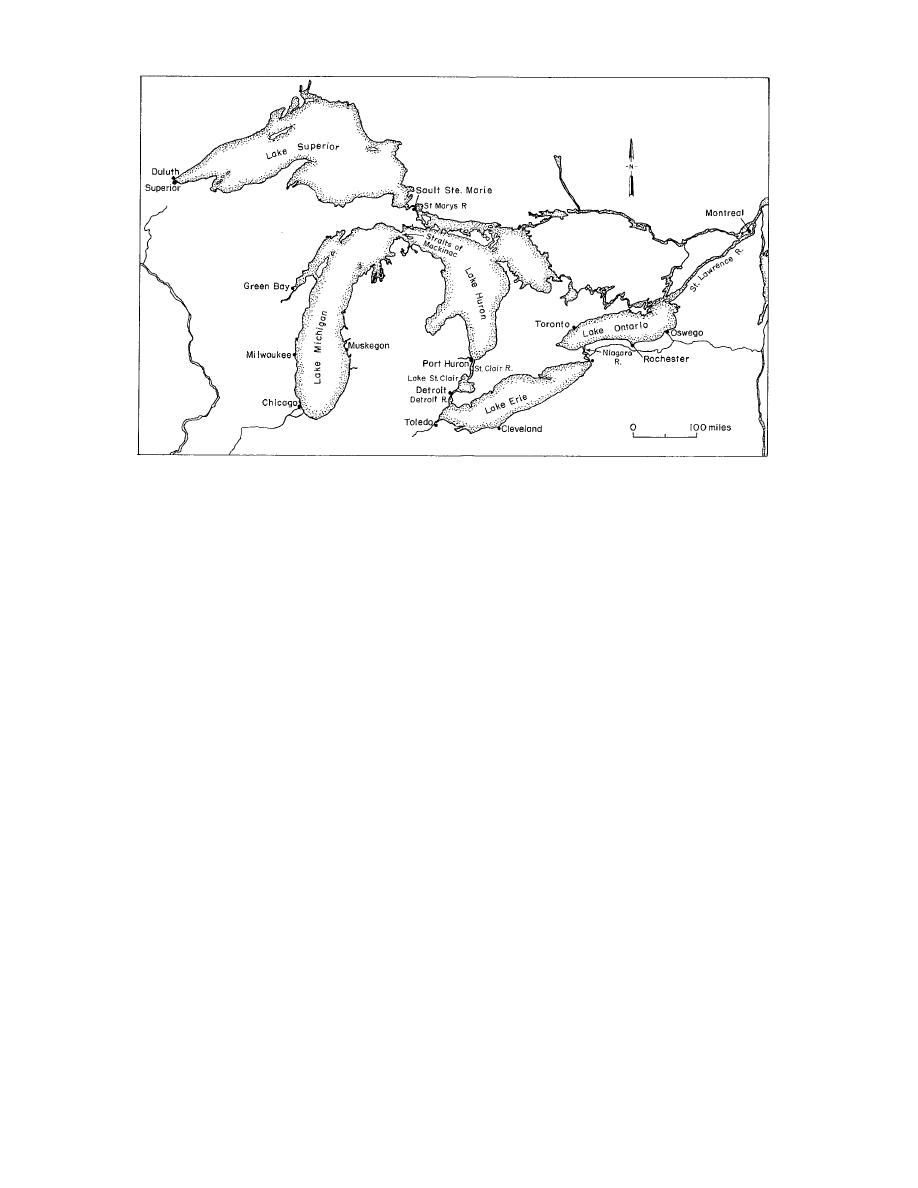
Figure 1. The Great Lakes Region.
(EIS) and is now operating the locks up to 8 January
Topics covered in this report include sediment
1 week. In 1981 the District began considering
transport, shoreline erosion, shore structure dam-
operating the locks to as late as 31 January 2
age, oil and hazardous substance spills, biologi-
weeks. Studies have been conducted since that
cal effects, ship-induced vibrations, bubbler sys-
time in preparation of an EIS for that proposal. A
tems, ice booms and ice control at locks. For the
draft EIS was completed in 1988 (USACE 1988).
most part the reports covered are those selected
The St. Lawrence Seaway is currently being op-
by the Detroit District for inclusion, but additional
erated under traditional season guidelines.
materials have been included as necessary for com-
This report provides a review of numerous en-
pleteness. In many cases the studies of a particu-
vironmental and engineering studies conducted
lar topic extended over several years, with the
under the Extended Season Navigation Programs,
more recent reports including information pub-
including many environmental studies conducted
lished in prior years. In those instances, empha-
after the publication of the 1979 Final Survey Re-
sis was placed on the final, comprehensive ver-
port under Operation and Maintenance Author-
sions. More detailed and extensive reviews of
ity. These later studies were undertaken to sup-
methods for dealing with river and lake ice prob-
port the preparation of environmental impact state-
lems can be found in Ashton (1986) and USACE
ments for extended operation of the lock facili-
(1982).
ties at Sault Ste Marie, Michigan, to 8 January 1
week and subsequently 31 January 2 weeks. The
Survey Study and Demonstration Program cov-
SEDIMENT TRANSPORT,
e re d a l l U . S . p o r t i o n s o f t h e G re a t L a k e s
SHORELINE EROSION AND
St. Lawrence Seaway System shown in Figure 1.
SHORE STRUCTURE DAMAGE
Most environmental analyses, however, were con-
ducted on the St. Lawrence, Detroit, St. Clair and
In this section, reports dealing with the effects
St. Marys Rivers, especially the St. Marys, where
of extended season navigation on sediment trans-
the confined waterways were considered to
port, shoreline erosion and shore structure dam-
present the greatest potential for damage. The 8
age are reviewed. As a starting point the physi-
January 1 week and 31 January 2 weeks pro-
cal effects of vessel passage on river hydraulics
gram concerned the upper Great Lakes only.
are reviewed in some detail since they form a com-
2



 Previous Page
Previous Page
